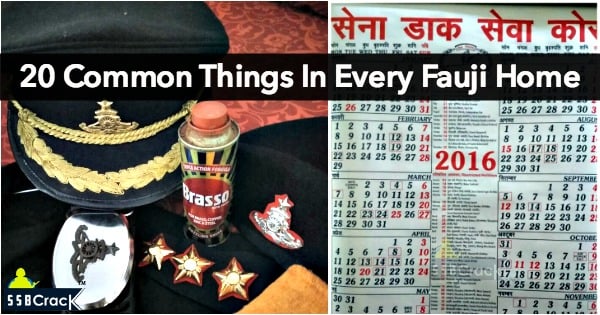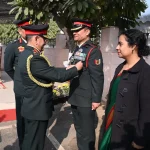It’s hard to pin down all the possible things that make the fauji lifestyle so different and unique. Right from the way of working and functioning to the small nitty gritty’s of the way the soldiers and their families live, there are a plethora of things that make the fauji lifestyle so intriguing. A major part of this lifestyle constitutes the houses of the Armed Forces personnel. Funnily enough, you can look at the drawing room of the house of a soldier and know where all they’ve been posted! The government houses that the Armed Forces personnel get, during the course of their postings to each new station, though may seem to be quite different from each other on the outside, but on the inside you’ll surely find things that almost all of these homes have!
Having the profession, lifestyle habits, discipline and way of living, it is no surprise that there are some things that are common to all of the fauji households. Some of which are listed below:
- LOTS of boxes (or commonly known as trunks). So these really big, heavy duty black boxes with the rank, name, and place of posting written in one corner of the box are a common sight in any fauji house. It is a convenient way to pack all of the clothes, utensils, and other things when you have to change your residence every 3 years or so.
- Crystal. Crystal glasses, crystal ashtray, crystal serving bowls, etc. They are a favourite with the fauji families!
- Nameplates, generally with the rank and the unit of current posting. Either painted on the wall of the
- Assortment of alcohol glasses. They are n a number of glasses, for whisky, for wine, for beer, for soft drinks, you get the drift right?
- Brasso. Ever wondered how come the stars on the uniform are so shiny? Well, it is owed to the brasso that every soldier’s wardrobe has.
- Mementos and souvenirs from units/offices of different postings.
- Pet dogs. Dogs constitute a major part in a majority of the fauji families. These dogs have probably seen more and lesser known places than most people, all thanks to the postings.
- Peg tables. Especially the drawing room has a lot of peg tables.
- A calendar of the Indian Postal Services.
- Sets of curtains that aren’t currently in use but have been accumulated from moving place to place.
- Flower pots covered with geru.
- A cap stand. This is probably the most common thing that you’ll find in fauji homes, used to put the caps and hats and also used as a key hanger. There’ll the beret, the peak-cap and the games cap, the golf cap, branded caps, the regimental hat, and the combat hat and the OTA/NDA/IMA cap and so on!
- Army phones. Unlike the smartphones, these army phones have their own charm. The calls from the unit, the OK reports and calls in the middle of the night are a common thing in a fauji home.
- Wooden furniture. Being posted to places where the wood is of great quality, the army families don’t leave the chance of getting that premium furniture like the carved furniture of Srinagar, driftwood furniture of northeast and the wooden furniture from Saharanpur, etc.
- Terracotta wind chimes. I don’t know why but most of the fauji families seem to have it, including mine! (God knows what the story behind that is!)
- Fireplaces and chimneys which are no longer functional. In some cantonments, the really old houses have these chimneys in the kitchen and fireplaces in the drawing room which are not in use anymore but well, they are still there. Creates quite an ambience, though.
- Shoe racks which have more formal shoes than other types of shoes. The Double Mounted Shoes (DMS), the brogues, the PT white shoes, combat shoes, etc.
- Portable swings are another common item found in fauji houses, irrespective whether it’s a ground floor house or first floor, etc.
- The gardens of the ground floor houses all have a boundary of bricks, with each brick coloured with either geru or chunna (the red and white). Generally, the bricks are placed in a slant position with the geru brick following the chunna brick or vice versa.
- Articles and items from each and every place of posting. You’ll always find something from the north, east, south and west in every fauji home.
Best SSB Book –> Let’s Crack SSB Interview
Best AFCAT Book –> Let’s Crack AFCAT
SSB Interview eBooks:
Also Read:













